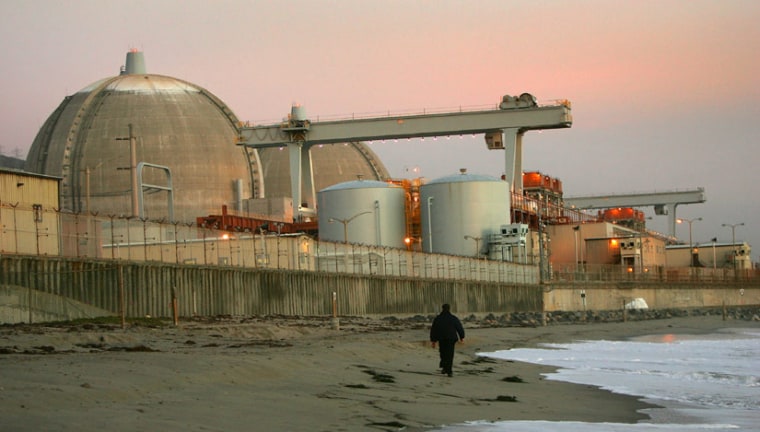Operators of California's two nuclear plants say they are well prepared for a possible tsunami strike. Some experts, however, are calling for new risk assessments that take into account the deadly earthquake, tsunami and nuclear crisis in Japan.
The San Onofre plant near San Clemente is built to withstand a 7.0-magnitude earthquake, while the Diablo Canyon plant is engineered up to magnitude 7.5, according to plant officials. Both are expected to survive tsunamis of up to 25 feet.
They are among the 88 reactors worldwide that are located in seismically active areas, according to the U.N.'s International Atomic Energy Agency. The California plants are the only nuclear facilities along the U.S. Pacific Coast.
However, some critics say federal regulators need to take a second look at the California plants, given the scope of destruction that occurred in Japan. Ed Lyman of the watchdog group Union of Concerned Scientists says current risk estimates for seismic and tsunami hazards may be outdated.
"Across the board, the NRC (Nuclear Regulatory Commission) has not set standards at a high enough level to protect the public from accidents that are more credible and plausible than previously considered," Lyman told reporters at a Wednesday press conference in Washington.
Twenty-three of the 104 reactors in the United States are the same design as the nuclear plant in Japan that's now in crisis. Each of these U.S. plants has to undergo individual testing for local risks such as earthquakes, hurricanes, high waves, extreme heat or flooding as part of their federal licensing requirements.
In 2008, the California Energy Commission released a report stating that San Onofre lacked safeguards for an earthquake greater than magnitude 7.0, which was the level expected when the plant was designed in the 1960s.
The state Public Utilities Commission agreed and ordered the company that owns the facility to perform a new earthquake and tsunami risk analysis of the reactors using the latest technology before seeking a renewal of the plant's federal operating license, which expires in 2022, the San Diego Union-Tribune reported. The same request was made of PG&E, which operates Diablo Canyon.
Edison turned in its initial report on earthquake and tsunami risks to the utilities commission last month, but the document lacked the three-dimensional seismic analysis that the agencies requested.
Both nuclear facilities are located above the water on coastal bluffs.
The California coast has experienced tsunamis in the past, the worst from the 1964 "Good Friday" earthquake in Alaska that measured 9.2 on the Richter scale. That quake and resulting wave swept away 11 people in Crescent City and killed a total of 17 people along the coast.
Southern California — where the nuclear plants are located — is in a high seismic area. But it doesn't face the large waves generated by big temblors in Japan or Alaska because its coastline is not as exposed, said Peggy Hellweg, a seismologist at the University of California at Berkeley.
Hellweg also doubts that the local earthquake faults near the nuclear plants can generate the kind of power felt in Japan. The Newport-Inglewood and Rose Canyon fault system near the San Onofre plant and the Hosgri fault and the Shoreline fault, which was discovered in 2008, run near the Diablo Canyon plant.
"The size of the earthquake depends on the size of the uninterrupted fault you have," Hellweg told Discovery News. "The length of those faults isn't enough to get a magnitude 8 or 9."
Researchers across California have been assembling a comprehensive study of the risk to the state from tsunamis over the past two years. The first phase of the study found that the region probably faces a bigger tsunami threat from earthquakes generated off the coast of Oregon and Washington, called the Cascadia subduction zone, or from the Aleutian Islands off Alaska.
The other danger is from underwater landslides just off the coast, said Stephen Mahin, director of the Pacific Earthquake Engineering Research Center at UC Berkeley.
"You have these big cliffs and those can cause local tsunamis which are far bigger than the distant ones," Mahin said. "But those are extremely hard to predict."
